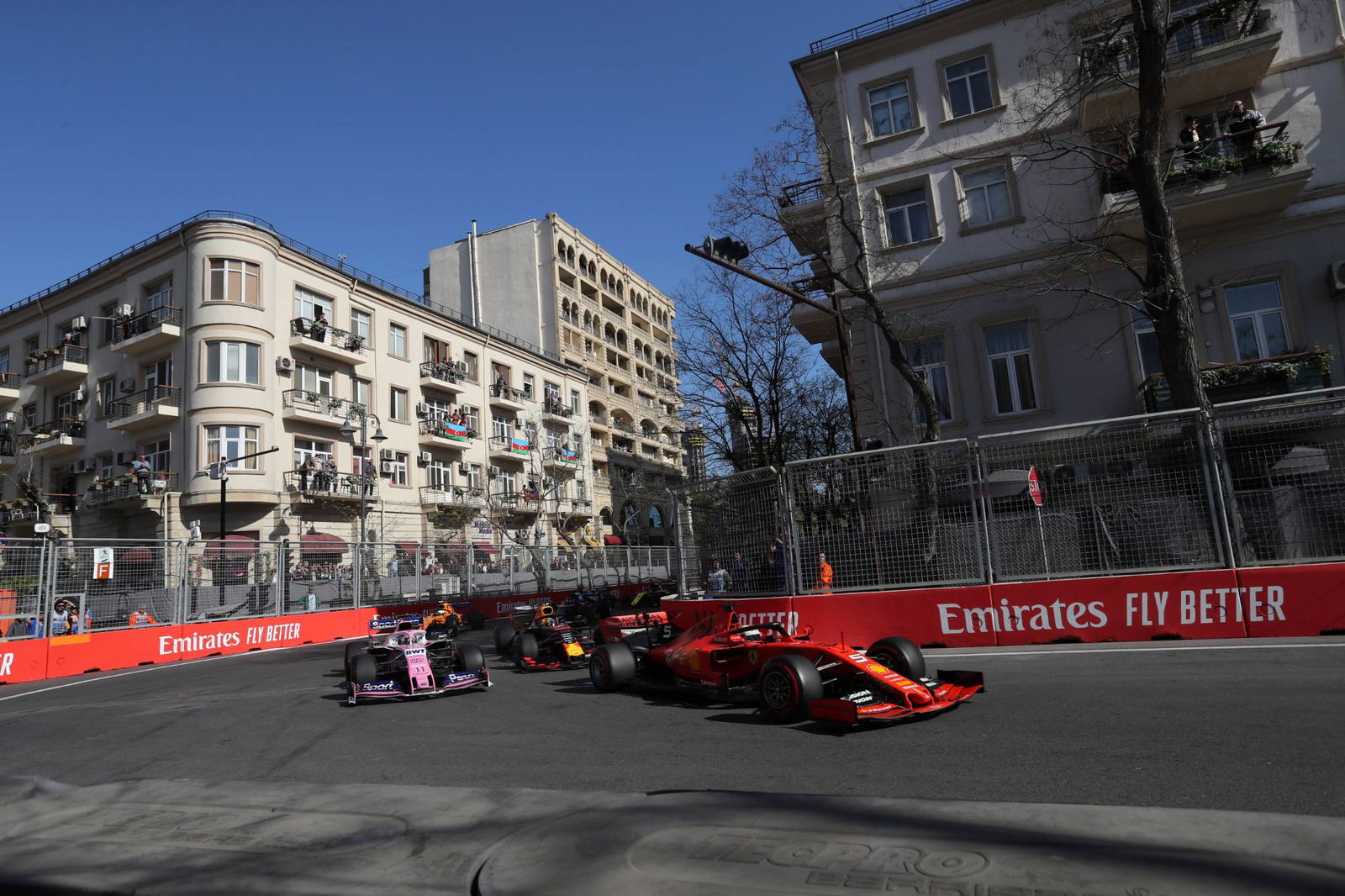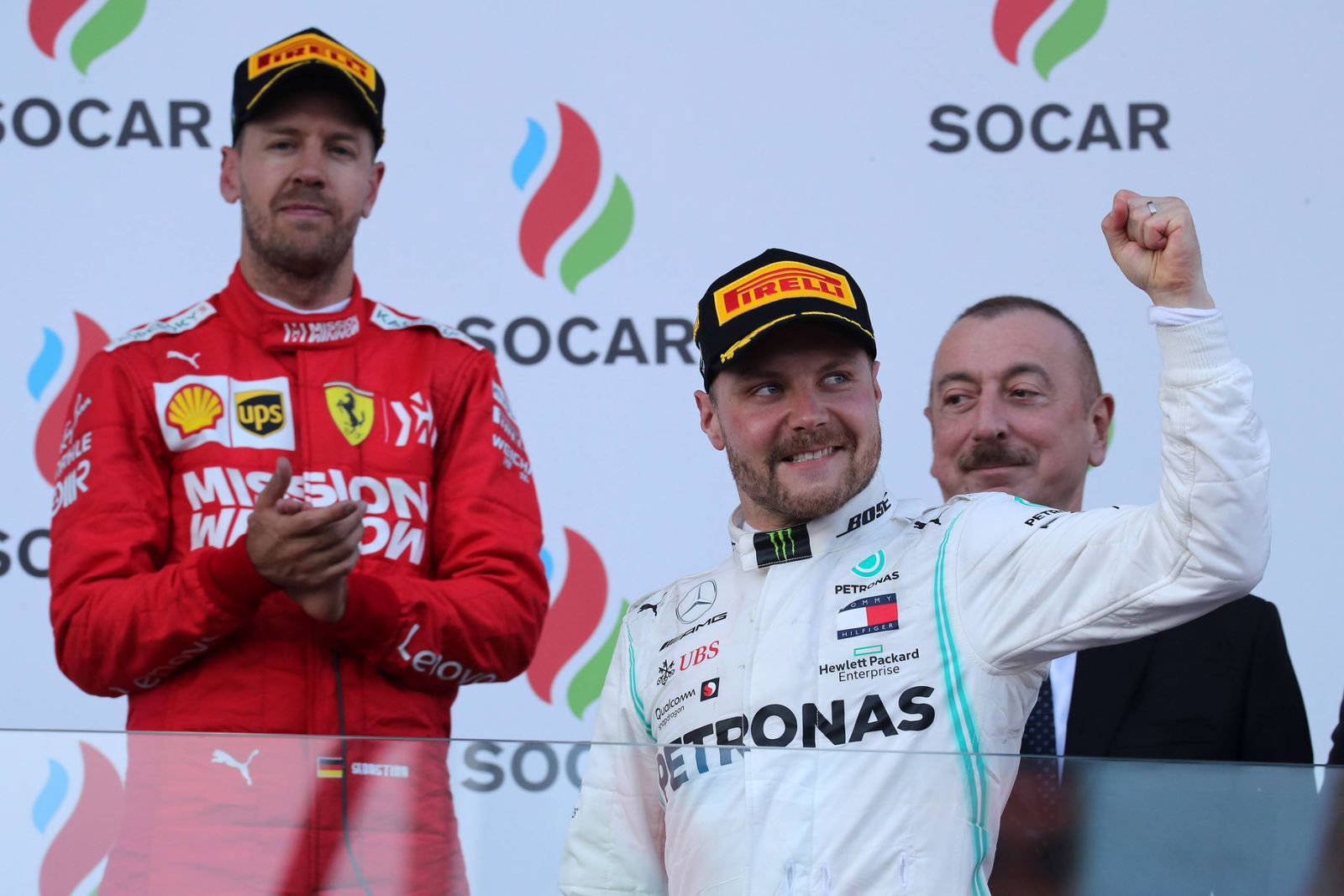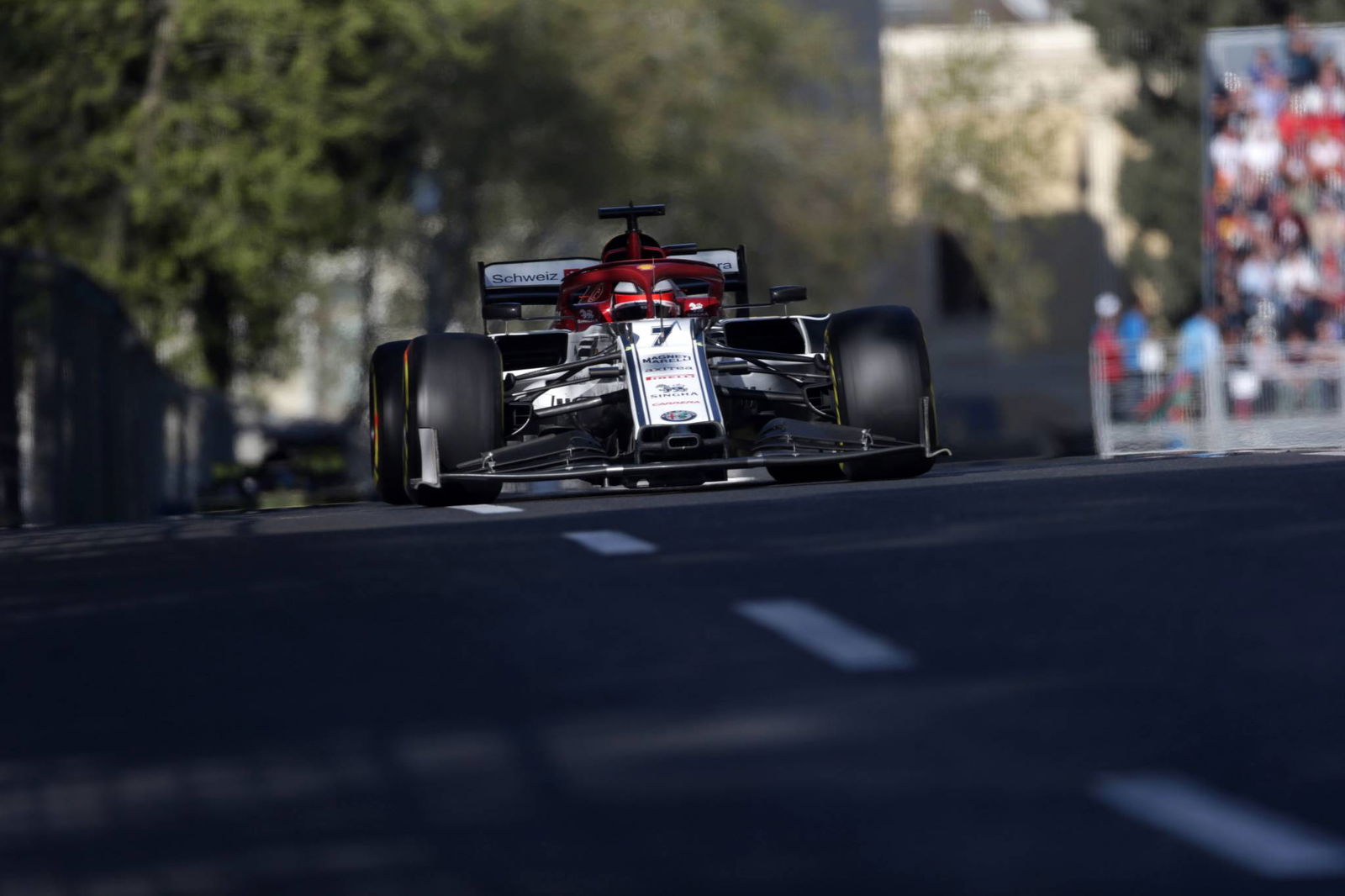F1 Race Analysis: The thinking behind Ferrari’s Baku strategy
You would have been laughed out of Mercedes’ hospitality unit if you had suggested during the first week of pre-season testing that just two months later, the team would be toasting a fourth consecutive one-two finish to mark the best start to a season in Formula 1 history.
The tables quickly turned in the early part of this year. Australia was an outlier, sure; Bahrain was certainly fortuitous; China was arguably closer than it looked. It wasn't that far ahead of Ferrari, right?

You would have been laughed out of Mercedes’ hospitality unit if you had suggested during the first week of pre-season testing that just two months later, the team would be toasting a fourth consecutive one-two finish to mark the best start to a season in Formula 1 history.
The tables quickly turned in the early part of this year. Australia was an outlier, sure; Bahrain was certainly fortuitous; China was arguably closer than it looked. It wasn't that far ahead of Ferrari, right?
But now, Mercedes’ advantage over Ferrari can no longer be downplayed. After another beatdown of the field in Baku on Sunday, at a track where Ferrari was expected to pull ahead and, after FP3, sat 1.6 seconds clear in the timesheets, the constructors’ championship already looks cooked.
Ferrari’s chances in Baku appeared to go the same way on Saturday when Charles Leclerc shunted at Turn 8, blowing his chances of a second F1 pole. Teammate Sebastian Vettel couldn’t pick up the pieces, paving the way for Mercedes to lock out the front row of the grid.
While Vettel could not challenge either Valtteri Bottas or Lewis Hamilton in the opening stages of the race, quickly falling out of touch with them, Leclerc – who, after a bad start that saw him fall to P10, was on the fightback – appeared to be coming into contention on the alternate strategy.
Starting on the Medium compound tyre had been Ferrari’s plan all along, with Leclerc and Vettel both being sent out on the yellow-ringed Pirelli rubber in Q2. Vettel was only forced to make the switch to Softs after a mistake on his first lap put him at risk of not advancing, while Leclerc made it through despite his crash. He was handed a fresh set of Mediums to start the race from P8 on the grid, his old set not fit to make the start.
Leclerc was able to rise into the lead so soon thanks to the initial round of pit stops being triggered earlier than anticipated. Vettel was the first driver to blink, coming in at the end of Lap 11 – just moments before Leclerc would have passed him anyway – after a tricky first stint on the Soft tyres.
“It was really difficult to get the tyres to work,” Vettel said of the first stint. “We were not quick, and it was really inconsistent, [making] mistakes, around here it was horrible because I had no feel for the car.
“I lost like seven seconds in the first stint, and then we kept it more or less between two and five until the end [of the second stint].”

Mercedes’ advantage was such that it could comfortably pit both Bottas and Hamilton on separate laps to cover Vettel off, but faced a challenge to try and make the Mediums last until the very end of the race. Leclerc, meanwhile, had not only manage to take the lead, but had a buffer that made him look like a realistic candidate for victory.
But it was always going to be difficult. If he wanted to stick to a one-stop strategy, Leclerc had to stretch out the Mediums which he started on, all while keeping the gap to the Mercedes drivers behind stable – a pretty impossible task.
Pitting early could have put Leclerc onto the back of Vettel, yet the rate at which the Soft tyres dropped off in the first stint proved just how difficult it would have been for Leclerc to keep in contention. With hindsight, a two-stop strategy would, of course, have been the best way for Leclerc to go – but it would still have most likely left him out of contention for the podium.
What really hamstrung Ferrari’s strategy was the decision to start on Mediums. Yes, there is an advantage to being able to eke out a longer first stint than your rivals, but at a track like Baku where the Hard tyre is useless, you’re snookered into still using the Softs at some point. It was a big gamble by Ferrari that, in all honesty, it was fortunate not to lose Vettel to as well.
“I think on the Hard tyres, we never tried them, but we were expecting to struggle with temperatures, so we didn’t really want to go with them,” Leclerc explained after the race.
“And then on the Softs, we were scared about the degradation. So we were left a little bit out in the blue.”
The fear of struggling on the Softs was the big factor in dictating Ferrari’s strategy in Baku. Had a Safety Car come – which, surprisingly, it did not – then Leclerc would have been in really good shape, coming in and being sat on the back of the leading quartet of drivers with a fresh set of tyres, potentially even gaining track position if they too pitted (that’s how Bottas jumped Vettel last year, remember).
There was some logic to the call Ferrari made on Sunday with Leclerc. But it was always fighting a losing battle after starting Leclerc on Mediums.

So where does Ferrari now go from here? Four races down, just three podium finishes to its name, and a 74-point gap to Mercedes at the top of the constructors’ championship.
Vettel said after the race that he felt Ferrari’s struggles were down to its tyre management and understanding – ironically, the very thing that had set Mercedes so far back in pre-season.
“I think we have the tools, we just need to put the package together,” Vettel said. “That seems to be the struggle. I think we’re struggling with the tyres a bit more than previous years.
“I don’t think our car is slow. I think Mercedes is very fast, but it seems easier for them to click and to happen, whereas for us it’s a bit more difficult.
“I think the secret so far this year on average has been the tyres, and we’re missing something.”
Ferrari needs to focus on getting the basics right at the next couple of races. Not one of the opening four rounds has been trouble-free, with some huge opportunities being missed.
Mercedes proved in Azerbaijan how getting the basics right can be so effective. There was nothing fancy or spectacular about its strategy. It didn’t flip the board to gain an advantage on Ferrari. It simply outpaced its allegedly-superior rival – debunking that myth at long last.

